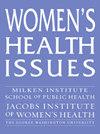Impacts of Medicaid Expansion on Contraceptive Use Among Women in Neighborhoods of Racialized Socioeconomic Deprivation in the United States
IF 2.5
2区 医学
Q2 PUBLIC, ENVIRONMENTAL & OCCUPATIONAL HEALTH
引用次数: 0
Abstract
Introduction
Medicaid expansion has the potential to increase access to contraception and improve women's health, although existing research examining state-level variation provides mixed evidence. The neighborhood context plays a crucial role in understanding the effects of Medicaid expansion on contraceptive use, as structural inequalities within neighborhoods may shape access to health care and reproductive services.
Materials and Methods
We used a unique restricted dataset of 13,224 female respondents ages 15–44 years interviewed in the 2011–2019 waves of the National Survey of Family Growth (NSFG). We merged these data with indicators of state Medicaid expansion status and respondents’ neighborhood context, operationalized as Index of Concentration at the Extremes (ICE) scores. We used quasi-experimental difference-in-differences models to assess if Medicaid expansion impacted provider-dependent contraceptive use and method type differentially by neighborhood-level context. We used multivariable linear probability and multinomial logistic regression models adjusting for individual and community covariates and state/region fixed effects.
Results
Living in a Medicaid expansion state was associated with significant increases in provider-dependent contraceptive method use among respondents in the most deprived neighborhoods (17.9 percentage points, 95% CI [9.0, 26.9], by 2017–2019). Specifically, long-acting reversible contraception (LARC) use increased 7.6 percentage points (95% CI [0.6–14.7]) and use of no method or barrier/coital methods declined 17.5 percentage points (95% CI [−26.3, −8.7]) among those in the most deprived neighborhoods by 2017–2019.
Conclusions
Changes in state-level policies can have major impacts on health systems, but the example of Medicaid expansion underscores the differential impacts on people with less access to health resources, such as those living in structurally disadvantaged neighborhoods. Ultimately, further expansion of Medicaid could facilitate access to the full range of contraceptive methods and advance population health equity in additional U.S. states.
医疗补助扩大对美国种族化社会经济剥夺社区妇女避孕药具使用的影响。
简介:医疗补助扩大有可能增加获得避孕和改善妇女健康,尽管现有的研究检查国家层面的变化提供了混合的证据。社区背景在理解医疗补助扩大对避孕药具使用的影响方面起着至关重要的作用,因为社区内部的结构性不平等可能会影响获得医疗保健和生殖服务的机会。材料和方法:我们使用了一个独特的限制性数据集,其中包括2011-2019年全国家庭增长调查(NSFG)中采访的13224名年龄在15-44岁的女性受访者。我们将这些数据与州医疗补助扩张状况指标和受访者的社区背景合并,作为极端集中指数(ICE)分数进行操作。我们使用准实验差异中差异模型来评估医疗补助计划的扩张是否影响了依赖于提供者的避孕方法的使用和方法类型在社区水平上的差异。我们使用多变量线性概率和多项逻辑回归模型来调整个体和社区协变量以及州/地区固定效应。结果:生活在医疗补助扩张州与最贫困社区受访者中依赖提供者的避孕方法的使用显著增加有关(17.9个百分点,95% CI[9.0, 26.9],到2017-2019年)。具体而言,2017-2019年,在最贫困社区中,长效可逆避孕(LARC)的使用增加了7.6个百分点(95% CI[0.6-14.7]),无方法或屏障/性交方法的使用下降了17.5个百分点(95% CI[-26.3, -8.7])。结论:州级政策的变化可能对卫生系统产生重大影响,但医疗补助扩张的例子强调了对卫生资源获取较少的人群的不同影响,例如生活在结构不利社区的人群。最终,进一步扩大医疗补助计划可以促进获得全方位的避孕方法,并促进美国其他州的人口健康平等。
本文章由计算机程序翻译,如有差异,请以英文原文为准。
求助全文
约1分钟内获得全文
求助全文
来源期刊

Womens Health Issues
Multiple-
CiteScore
4.50
自引率
6.20%
发文量
97
审稿时长
32 days
期刊介绍:
Women"s Health Issues (WHI) is a peer-reviewed, bimonthly, multidisciplinary journal that publishes research and review manuscripts related to women"s health care and policy. As the official journal of the Jacobs Institute of Women"s Health, it is dedicated to improving the health and health care of all women throughout the lifespan and in diverse communities. The journal seeks to inform health services researchers, health care and public health professionals, social scientists, policymakers, and others concerned with women"s health.
 求助内容:
求助内容: 应助结果提醒方式:
应助结果提醒方式:


